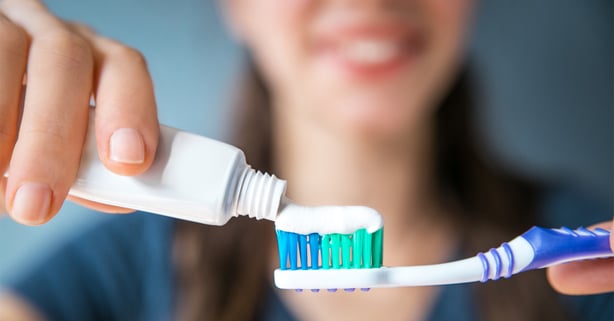
According to the U.S. Centers for Disease Control and Prevention, approximately 75 percent of the American population on public water systems (more than 210 million people) has access to fluoridated water.1 Fluoride is a safe and healthy public method for mitigating tooth decay, but many people don't understand how fluoride works or have misconceptions about it. This mineral, sometimes known as "nature's cavity fighter," plays a major role in general oral health. Understanding fluoridation is important in order to protect the teeth of your loved ones.
Where is fluoride found?
In nature, fluoride is found in soil and rocks, as well as both fresh and ocean water, according to the Fluoride Information Network.2 Keep in mind that fluoride is not only found in the drinking water of most public water systems, but also in many foods that use fluoridated water, as well as toothpastes and mouthwashes. The American Dental Association recommends using fluoride toothpaste that has a displayed ADA seal of approval, and making sure to use an appropriate amount of toothpaste based on age.3 Fluoride rinse and varnish is also often used during a visit to the dentist's office to help fight cavities.
"The CDC recognizes fluoridation as a great public health achievement."
How effective is fluoride?
The Fluoride Information Network notes that fluoridated communities can benefit from a 30 to 40 percent reduction in cavities.2 In fact, fluoride is so effective that the CDC recognizes fluoridation as one of the top 10 great public health achievements of the 20th century. The organization explains that fluoride keeps tooth enamel strong and healthy and stops the onset of tooth decay. In small communities, the amount of fluoride included in drinking water is often based off of estimated public consumption. In other words, fluoride levels are lower in communities that may drink more water due to hotter climates and other factors.
Why does fluoride cause controversy?
The CDC notes that fluoridated water incites controversy because fluoride can cause some adverse health effects if a person is exposed to it at excessive levels. However, this is often due to naturally high levels of fluoride found in the drinking water of small communities, rather than public water systems that provide the ideal level of the mineral in water. Put simply, excessive fluoride exposure affects few people in the U.S., and generally is caused by natural levels rather than manufactured ones.
Does using fluoride mean I don't have to see the dentist?
Fluoride is distributed in public water supplies to help the larger population, including those who may not have access to good oral health care. With that in mind, fluoride is a precaution, but only one aspect of comprehensive oral health. For many Americans, a trip to the dentist can seem overwhelmingly expensive. However, dental discount plans, such as dental cards that charge a low monthly fee, can make regular checkups, getting a filling or other oral care services more affordable.
1 "Community water fluoridation," the U.S. Centers for Disease Control and Prevention, Dec. 6, 2013. http://www.cdc.gov/fluoridation/faqs
2 "Frequently asked questions," Fluoride Information Network. http://fluorideinfo.org/FAQ.html#anchor3
3 "Fluoride," Mouth Healthy, the American Dental Association. http://www.mouthhealthy.org/en/az-topics/f/fluoride
